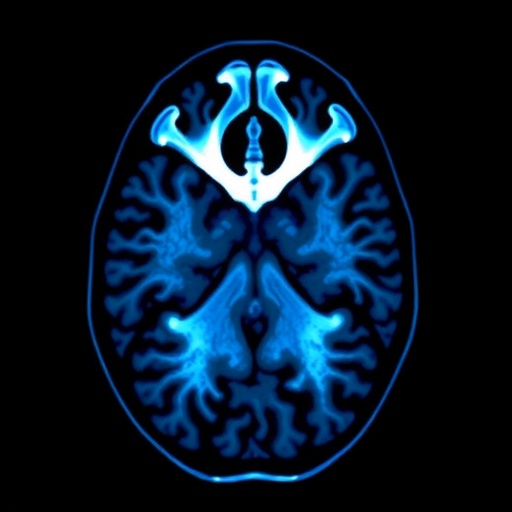In a groundbreaking advancement combining medical imaging and artificial intelligence, researchers have unveiled a powerful deep learning model capable of accurately distinguishing between Brucella spondylitis (BS) and tuberculous spondylitis (TS) using conventional magnetic resonance imaging (MRI). These two spinal infections, though clinically distinct in their treatment approaches, often pose significant diagnostic challenges due to overlapping features on imaging and limitations in pathogen detection. This new approach promises to revolutionize diagnostic pathways and elevate patient care through cutting-edge computational techniques.
Brucella spondylitis and tuberculous spondylitis represent major infectious pathologies affecting the spine, each requiring tailored clinical management strategies. Misdiagnosing one for the other can result in suboptimal therapy and detrimental outcomes. Traditional imaging methods, while invaluable, sometimes lack the specificity needed to confidently differentiate between BS and TS. Similarly, microbiological and molecular diagnostic tests may not always offer rapid or definitive answers, underscoring the urgent need for innovative diagnostic modalities to fill these gaps.
The study harnessed the power of deep learning, a subset of artificial intelligence known for its capacity to uncover complex patterns in imaging data. The investigators enrolled a robust cohort comprising 310 patients diagnosed with either Brucella spondylitis or tuberculous spondylitis. This dataset was strategically partitioned into a training group to develop the model and a validation group to test its clinical applicability. Additionally, external validation was performed using data sourced from a different hospital, highlighting the model’s potential for real-world generalizability.
.adsslot_Jeo0aZBjYT{ width:728px !important; height:90px !important; }
@media (max-width:1199px) { .adsslot_Jeo0aZBjYT{ width:468px !important; height:60px !important; } }
@media (max-width:767px) { .adsslot_Jeo0aZBjYT{ width:320px !important; height:50px !important; } }
ADVERTISEMENT
At the heart of the computational framework lies the integration of a Convolutional Block Attention Module (CBAM) into the ResNeXt-50 neural network architecture. CBAM enhances the model’s ability to focus on the most diagnostically relevant regions within sagittal T2-weighted MRI images by implementing refined attention mechanisms. This fusion of attention and residual learning allows the model to efficiently extract and prioritize subtle imaging features that differentiate BS from TS, which may be elusive to human observers.
The training process involved feeding the model with high-resolution MRI images from the spine, particularly emphasizing sagittal T2-weighted sequences known for their sensitivity in detecting inflammatory and infectious changes. By iteratively adjusting internal parameters through backpropagation, the model learned to discriminate between the nuanced imaging signatures characteristic of each spondylitis subtype. Crucially, rigorous validation against an independent test set and an external cohort ensured that the model maintained its discriminative power across diverse clinical scenarios.
Quantitative evaluation demonstrated the model’s remarkable diagnostic performance, with accuracy surpassing 94%, precision and recall both hovering around 94% and 93% respectively, and an overall area under the receiver operating characteristic curve (AUC) exceeding 0.95. These metrics indicate not only high correctness in predictions but also balanced sensitivity and specificity, essential traits for clinical utility. In head-to-head comparisons, this CBAM-ResNeXt model outperformed widely used deep learning architectures such as ResNet50, GoogleNet, EfficientNetV2, and VGG16, underscoring its superiority.
This advancement holds profound implications for clinical practice. Radiologists and infectious disease specialists often grapple with differentiating BS and TS due to overlapping clinical and imaging presentations. By providing a reliable, image-based diagnostic tool enhanced by artificial intelligence, the model can assist clinicians in making faster, more accurate diagnoses without relying solely on invasive sampling or prolonged microbiological tests. The implications extend beyond improving diagnostic confidence; they potentially translate into more timely initiation of appropriate therapies and better patient prognoses.
Moreover, the model’s reliance on conventional MRI data is a noteworthy advantage. MRI remains a standard imaging modality in spine evaluations worldwide, enabling broad accessibility of this diagnostic approach without the need for specialized or prohibitively expensive imaging techniques. The use of sagittal T2-weighted images, in particular, aligns with routine clinical protocols, facilitating seamless integration into existing workflows.
The study’s methodology also showcases the growing trend of embedding attention mechanisms within convolutional neural networks to enhance interpretability and performance in medical image analysis. CBAM’s dual attention—channel and spatial—allows the network to dynamically emphasize important features while suppressing irrelevant information, resembling a radiologist’s focused assessment but at a computational scale and precision unattainable by humans alone.
While the results are highly promising, the authors acknowledge the need for further validation in larger multi-center cohorts and real-world clinical trials to assess the model’s robustness across varied populations and imaging platforms. Future research directions may involve expanding the model’s capabilities to differentiate other spinal infections or incorporating multi-modal data inputs such as clinical parameters and laboratory tests to enhance diagnostic accuracy.
In sum, this innovative application of deep learning in neuroradiology marks a pivotal step forward in infectious disease diagnostics. By melding advanced AI architectures with conventional MRI imaging, the CBAM-ResNeXt model epitomizes how technology can bridge critical clinical gaps, ultimately fostering precision medicine in complex neuroinfectious diseases. As research progresses, such tools could become indispensable components of modern healthcare, elevating diagnostic standards and patient outcomes globally.
The rapid evolution of artificial intelligence in medicine continues to unveil unprecedented opportunities. This study exemplifies the potential for AI-driven models not merely to replicate human expertise but to amplify it, unearthing subtle diagnostic clues hidden within imaging datasets. With ongoing interdisciplinary collaboration, future innovations will likely expand beyond diagnosis into prognostication and personalized treatment planning, heralding a new era in spine infection management.
In conclusion, the development of this deep learning-based MRI diagnostic model for Brucella spondylitis versus tuberculous spondylitis heralds a transformative approach to spinal infection diagnosis. It exemplifies the confluence of medical knowledge, imaging technology, and AI prowess, delivering a clinically impactful tool poised to refine patient care pathways. The promise of such models is vast, potentially reshaping diagnostic paradigms and inspiring future research at the intersection of computational intelligence and medicine.
Subject of Research: Differentiation between Brucella spondylitis and tuberculous spondylitis using deep learning models applied on conventional MRI.
Article Title: Development of a deep learning-based MRI diagnostic model for human Brucella spondylitis.
Article References:
Wang, B., Wei, J., Wang, Z. et al. Development of a deep learning-based MRI diagnostic model for human Brucella spondylitis. BioMed Eng OnLine 24, 87 (2025). https://doi.org/10.1186/s12938-025-01404-6
Image Credits: AI Generated
DOI: https://doi.org/10.1186/s12938-025-01404-6
Tags: advanced diagnostic techniques for infectionsartificial intelligence in healthcareBrucella spondylitis detectionchallenges in diagnosing spinal infectionscomputational methods in radiologydeep learning in medical imagingimproving patient care through AIinfectious disease imaginginnovative approaches to diagnostic challengesmachine learning applications in medicineMRI diagnosis of spinal infectionstuberculous spondylitis differentiation





